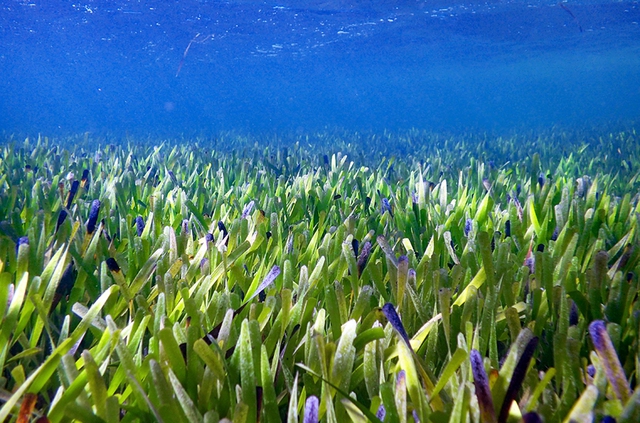The world’s largest plant individual is 4,500 years old, covering an area 40 times larger than West Lake
About 4,500 years ago, a single seed – descended from two different species of seagrass – landed in what is now Shark Bay, off the coast of Western Australia. Unaffected by humans, the seed had a chance to grow beyond imagination.
Scientists have discovered that thousands of years old seeds have grown into the largest individual plant on Earth, covering an area up to 200 km wide.2, which is 40 times the area of West Lake. The seagrass in question has the scientific name Posidonia australis, commonly found along the southern coast of Australia.

Posidonia australis.
When analyzing genetic differences between seagrass species found in the area, the team discovered something strange. Two samples of seagrass, taken from two areas up to 180km apart, do not belong to two different species of Posidonia australis, but come from the same giant plant.
“The 200 square kilometer lawn seems to have spread from a single seed‘, said Jane Edgeloe, a research student from the University of Western Australia. She and her colleagues analyzed about 18,000 genetic tracks, eager to find different grass species for conservation purposes, they were shocked to learn that all samples came from a single individual.
Posidonia australis can grow up to 35 centimeters a year, and based on this number, the team estimates that the individual plant has existed for at least 4,500 years to be able to spread that far. The seagrass branches have formed a giant underwater grassland, some of the leaves are only about 10 cm long, while there are strips of leaves up to about 1 meter long.

Huge seagrass bed seen from the air.
Habitat in Shark Bay is also not easy, yet Posidonia australis still does well in waters with a concentration of salt twice as dense as other areas in the bay. They also grow well in water as cold as 15 degrees Celsius, or even when the water is as warm as 30 degrees Celsius.
According to Professor Elizabeth Sinclair, the body of Posidonia australis contains both chromosomes of two seagrass parents, giving it a rare genetic diversity. “Instead of taking half of the genes from the father and mother, it keeps all the genes” said Mrs. Sinclair.
Also according to the research team’s assertion, this giant creature is largely sterile, so it must rely on its own growth ability to develop, not create descendants.
“Plants that are not ‘breeded’ often have low genetic diversity, which is crucial in coping with changes in the environment.“, said biologist at Flinders University, Professor Martin Breed.
The Guardian quoted seagrass expert Kathryn McMahon, who did not contribute to the new study, that the lifespan of this saltwater creature could range between 2,000 and 100,000 years. Therefore, it is not impossible for an individual Posidonia australis to live for 4,500 years, spanning 20,000 hectares.
“They have a flexible growth pattern, which helps them to have a long life”, commented Ms. McMahon. “They can reach into nutrient-rich seas to get what they need, or reach large bodies of water where they can thrive. That shows that if they have a suitable habitat, they can survive for a very long time.“.
at Blogtuan.info – Source: genk.vn – Read the original article here

